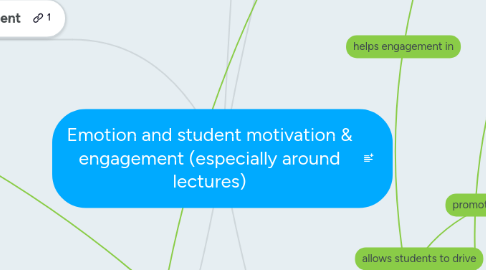
1. Participants
1.1. Elizabeth
1.2. Natalie
1.3. Marcus
1.4. Sara
1.5. Alana
1.6. Andrew
1.7. Leigh
1.8. Danny
1.9. Renee
1.10. Ed
2. Community of Inquiry
2.1. Social presence
2.2. Teaching presence
3. Online formats
3.1. Depends on learner maturity
3.2. Anywhere access
3.2.1. Supporting remote students
3.3. Examples of use
3.3.1. E.g. synchronous online sessions
3.3.2. Forums
3.3.2.1. Student-run forums
4. DET quality teaching dimensions
4.1. Intellectual quality
4.2. Quality learning environment
4.3. Significance
5. Characteristics of the student
5.1. Will students necessarily engage with relationships?
5.1.1. Self-directed students
5.1.2. Cognitive presence
5.1.3. Students who fear accountability
5.2. Student agency
5.2.1. Student input into curriculum design
5.2.2. Autonomy
5.2.3. Contribution
5.3. Background/experiences
5.3.1. Academic
5.3.2. Social/cultural
5.4. Obligations
5.5. Diverse!
5.6. Independence/Self-directedness
5.7. Needs
5.7.1. Social interactions
5.7.2. Face to face interactions
5.8. Love for learning
5.9. Multitasking
5.9.1. Detracts from learning
6. Curriculum design/unit development
7. Tending to the affective domain
7.1. Don't stand behind the lectern
7.2. Body language
7.3. Eye conact
7.4. Be genuine
7.5. Build familiarity
7.6. Connect with students
7.6.1. e.g. through unrelated conversation
7.7. Students feeling comfortable and safe
7.7.1. teacher sharing something personal first
7.8. Students feeling accepted by peers
7.9. Students feeling valued by instructor
7.10. Learn students' names
7.11. Building relationships
8. Lectures
8.1. Counterproductive influences
8.1.1. Students as passive receivers
8.1.2. Laptops and social media?
8.1.3. Size?
8.1.3.1. students feeling vulnerable
8.1.3.2. Students feeling self conscious
8.2. Active learning in the lecture
8.2.1. Think pair share
8.2.2. Electronic polling
8.2.2.1. www.socrative.com
8.2.3. Questioning
8.2.4. Studio format
8.2.4.1. In-class demonstrations
8.2.4.2. Exercises on portable devices
8.2.5. Brainstorming
8.2.5.1. Padlet
8.2.5.1.1. Students irresponsible?
8.2.6. Skeleton notes
8.2.7. Groups solving problems from different perspectives
8.2.8. Social situations
8.3. Engagement
8.3.1. Chunking lecture time
8.3.2. Assessment as incentive
8.3.2.1. Focus on product not process?
8.3.3. Motivation
8.3.3.1. Temporal
8.3.3.1.1. Prior to lecture
8.3.3.1.2. Within lecture
8.3.3.1.3. After lecture?
8.3.3.1.4. For the whole unit
8.3.3.2. Personal
8.3.3.2.1. Intrinsic
8.3.3.2.2. Extrinsic
8.3.4. Audiovisual stimulus
8.3.4.1. Prezi instead of PowerPoint
8.4. Sensory channels
8.4.1. Visual
8.4.1.1. Written
8.4.1.2. Graphical
8.4.1.3. Handouts
8.4.2. Audio
8.4.3. Interactive
8.4.3.1. Peer discussion
8.4.3.2. Question time
8.5. Context/discipline
8.6. The lectorial
8.7. Global focus
9. Hierarchy of needs
9.1. Physiological
9.2. Safety
9.3. Belonging
9.4. Esteem
9.5. Autonomy, fulfilling one's potential
10. Characteristics of the lecturer
10.1. Building rapport
10.1.1. Being memorable?
10.1.2. Effortless/naturalness?
10.1.3. Time and contact are necessary
10.2. Personality
10.3. Knowledge
10.4. Love/passion/enthusiasm/energy for subject
10.4.1. Is this enough?
10.4.2. Sharing this passion with your class
10.5. Awareness of students' needs
10.6. Approach to teaching
10.7. Training
10.7.1. Acting lessons
10.7.2. Talent/skill
10.7.3. Lecturer's digital literacy
10.7.3.1. Need for professional development to run online courses?
10.7.3.2. Higher in younger lecturers
10.8. Philosophy
10.8.1. Making the uninteresting interesting

